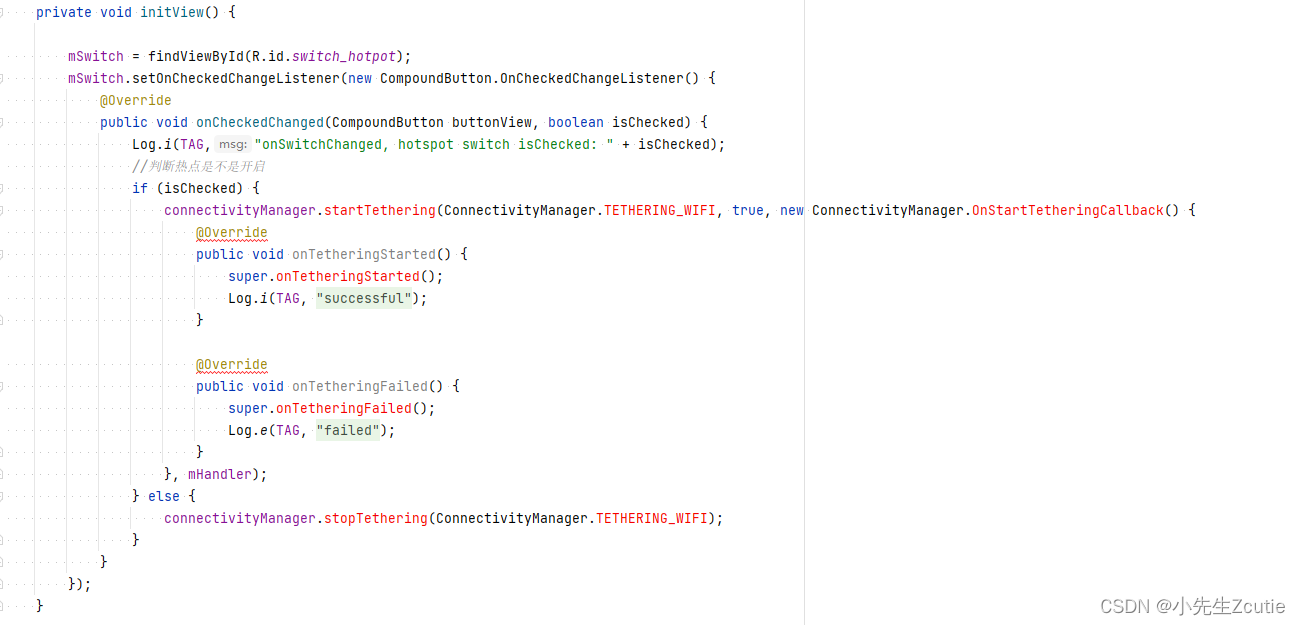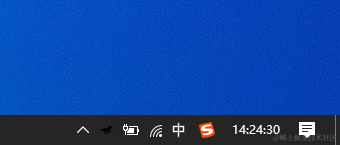1.语言检测
安装包:
# 语言检测
%pip install azure-ai-textanalytics==5.2.0需要用到密钥和资源的终结点,所以去Azure上创建资源,我这个是创建好的了然后点击密钥和终结者去拿到key和终结点
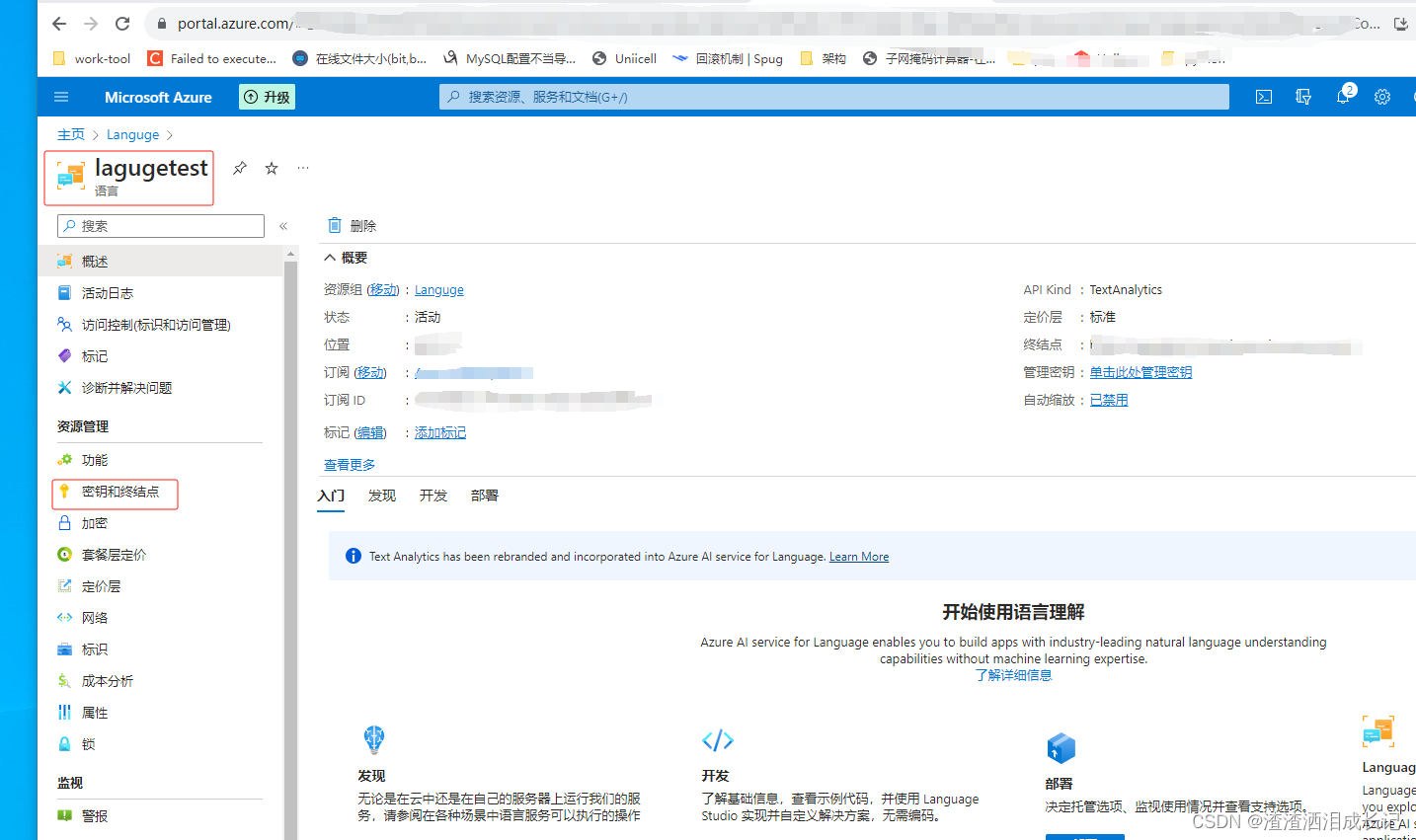
两个密钥选择哪个都行

语言检测代码示例:
key = ""
endpoint = ""
from azure.ai.textanalytics import TextAnalyticsClient
from azure.core.credentials import AzureKeyCredential
def authenticate_client():
ta_credential= AzureKeyCredential(key)
text_analytics_client=TextAnalyticsClient(
endpoint=endpoint,
credential=ta_credential
)
return text_analytics_client
client=authenticate_client();
# 检测文本是哪种语言
def language_detection_example():
try:
documents = ["Ce document est rédigé en Français."]
response=client.detect_language(documents=documents,country_hint = 'us')[0]
print("response",response)
print("Language: ", response.primary_language.name)
except Exception as err:
print("Encountered exception. {}".format(err))
language_detection_example()
运行结果:
response {'id': '0', 'primary_language': DetectedLanguage(name=French, iso6391_name=fr, confidence_score=1.0), 'warnings': [], 'statistics': None, 'is_error': False, 'kind': 'LanguageDetection'}
Language: French2.提取关键短语
# 提取关键语言
def key_phrase_extraction_example(client):
try:
documents = ["你好啊,我叫feng,是java程序员,想学习更多的知识"]
response = client.extract_key_phrases(documents = documents)[0]
if not response.is_error:
print("\tKey Phrases:")
for phrase in response.key_phrases:
print("\t\t", phrase)
else:
print(response.id, response.error)
except Exception as err:
print("Encountered exception. {}".format(err))
key_phrase_extraction_example(client)返回:感觉对中文的提取一般不是很友好
Key Phrases:
feng
java程
你好
想学
多的知识换成英文
documents = ["Dr. Smith has a very modern medical office, and she has great staff."]关键字提取好像就会好很多啊!
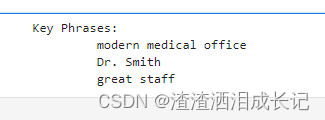
["Hello, my name is Feng. My hobby is singing and traveling, and I hope to make friends with you"]确实英语就好很多。
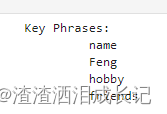
2.图像分析
安装包:
# 图像分析
%pip install --upgrade azure-cognitiveservices-vision-computervision
# 图像处理库
%pip install pillow这是3.2版本的,这个版本可以支持返回分析中国语言
它就是给一个图片,它会分析出图片大概有什么,以及占的比例,就像是百度的识别万物一样,识别出的物品是什么以及占比。
2.1 url图片地址分析-版本3.2
咱们拿这个图片让它帮分析一下

代码示例:
# 图像分析-url版本
from azure.cognitiveservices.vision.computervision import ComputerVisionClient
from azure.cognitiveservices.vision.computervision.models import OperationStatusCodes
from azure.cognitiveservices.vision.computervision.models import VisualFeatureTypes
from msrest.authentication import CognitiveServicesCredentials
import os
os.environ["VISION_KEY"]=''
os.environ["VISION_ENDPOINT"]=''
subscription_key = os.environ["VISION_KEY"]
endpoint = os.environ["VISION_ENDPOINT"]
computervision_client = ComputerVisionClient(endpoint, CognitiveServicesCredentials(subscription_key))
remote_image_url = "https://raw.githubusercontent.com/Azure-Samples/cognitive-services-sample-data-files/master/ComputerVision/Images/landmark.jpg"
tags_result_remote = computervision_client.tag_image(remote_image_url,language="zh")
if (len(tags_result_remote.tags) == 0):
print("No tags detected.")
else:
for tag in tags_result_remote.tags:
print("'{}' with confidence {:.2f}%".format(tag.name, tag.confidence * 100))
print()
运行结果:
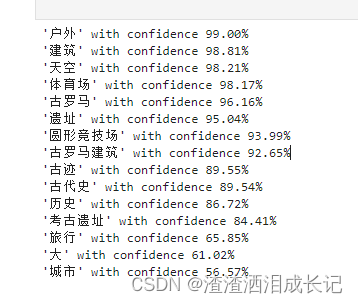
2.2 本地图片分析-版本3.2
# 图像分析-本地图片
from azure.cognitiveservices.vision.computervision import ComputerVisionClient
from azure.cognitiveservices.vision.computervision.models import OperationStatusCodes
from azure.cognitiveservices.vision.computervision.models import VisualFeatureTypes
from msrest.authentication import CognitiveServicesCredentials
import os
os.environ["VISION_KEY"]=''
os.environ["VISION_ENDPOINT"]=''
subscription_key = os.environ["VISION_KEY"]
endpoint = os.environ["VISION_ENDPOINT"]
computervision_client = ComputerVisionClient(endpoint, CognitiveServicesCredentials(subscription_key))
local_image_path = os.path.join("C:\\Users\\Uniigym3\\AppData\\Roaming\\Python\\Python38\\Scripts\\images", "11.png")
local_image = open(local_image_path, "rb")
tags_result_local_image = computervision_client.analyze_image_in_stream(local_image,language="zh")
print(tags_result_local_image)
if (len(tags_result_local_image.categories) == 0):
print("No description detected.")
else:
for category in tags_result_local_image.categories:
print("'{}' with confidence {:.2f}%".format(category.name, category.score * 100))
print()运行结果:
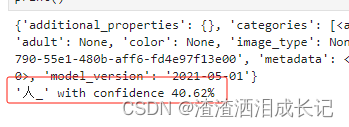
2.3 url图片地址分析-版本4.0
安装包:
%pip install azure-ai-vision咱们让它分析这个图片

import os
import azure.ai.vision as sdk
service_options = sdk.VisionServiceOptions("",
"")
vision_source = sdk.VisionSource(
url="https://learn.microsoft.com/azure/ai-services/computer-vision/media/quickstarts/presentation.png")
analysis_options = sdk.ImageAnalysisOptions()
# 可选的视觉特征
analysis_options.features = (
sdk.ImageAnalysisFeature.CAPTION |
sdk.ImageAnalysisFeature.TEXT
)
analysis_options.language = "en"
# 性别中立的描述文字,默认值为区分性别的描述文字。 例如,在英语中,当你选择性别中立的描述文字时,“女性”或“男性”等术语将替换为“人员”,而“男孩”或“女孩”则将替换为“儿童”。
analysis_options.gender_neutral_caption = False
image_analyzer = sdk.ImageAnalyzer(service_options, vision_source, analysis_options)
result = image_analyzer.analyze()
# 成功你就按自己选的特征进行
if result.reason == sdk.ImageAnalysisResultReason.ANALYZED:
if result.caption is not None:
print(" Caption:")
print(" '{}', Confidence {:.4f}".format(result.caption.content, result.caption.confidence))
if result.text is not None:
print(" Text:")
for line in result.text.lines:
points_string = "{" + ", ".join([str(int(point)) for point in line.bounding_polygon]) + "}"
print(" Line: '{}', Bounding polygon {}".format(line.content, points_string))
else:
error_details = sdk.ImageAnalysisErrorDetails.from_result(result)
print(" Error reason: {}".format(error_details.reason))
print(" Error code: {}".format(error_details.error_code))
print(" Error message: {}".format(error_details.message))运行结果:除图片的信息展示以外还会反馈出图片的文字
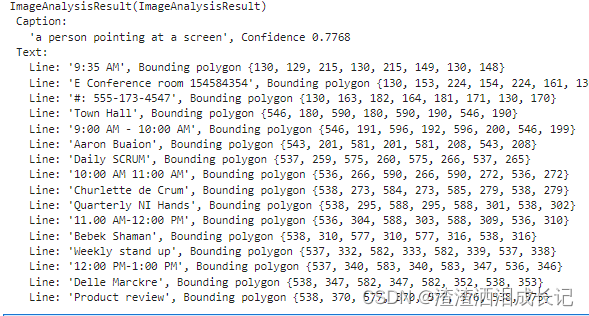
analysis_options.gender_neutral_caption = True ,性别中立的描述文字,默认值为区分性别的描述文字。 例如,在英语中,当你选择性别中立的描述文字时,“女性”或“男性”等术语将替换为“人员”,而“男孩”或“女孩”则将替换为“儿童”。
如果设置False或不加这个设置,刚才的结果就是
Caption: 'a man pointing at a screen', Confidence 0.7768
2.4 本地图片分析-版本4.0
就只需要把上面的这个url图片的代码改成下面的图片路径代码就可以直接在本地使用了。
vision_source = sdk.VisionSource(url="https://learn.microsoft.com/azure/ai-services/computer-vision/media/quickstarts/presentation.png")vision_source = sdk.VisionSource(filename="C:\\Users\\Uniigym3\\AppData\\Roaming\\Python\\Python38\\Scripts\\images\\test.jpg")我们测试个百变小樱魔术卡
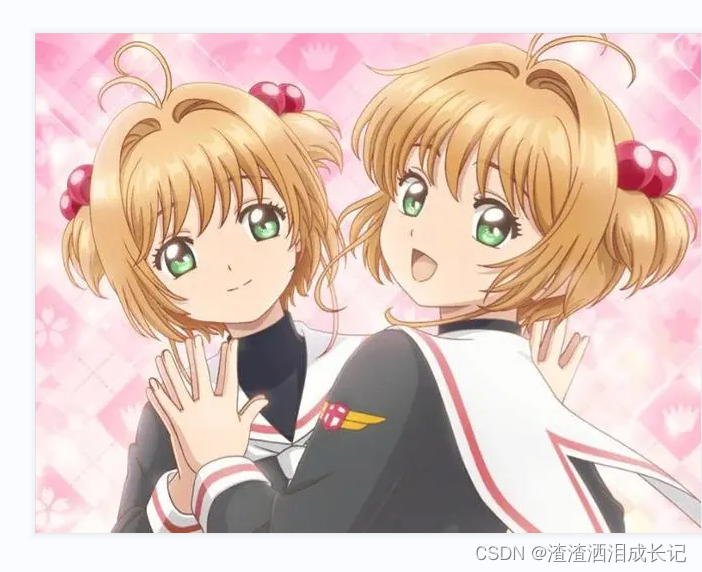
运行结果:

说是有卡通的小女孩,并且标签也识别出日本动漫。
再来测试个图片:好几个国家的语言哈
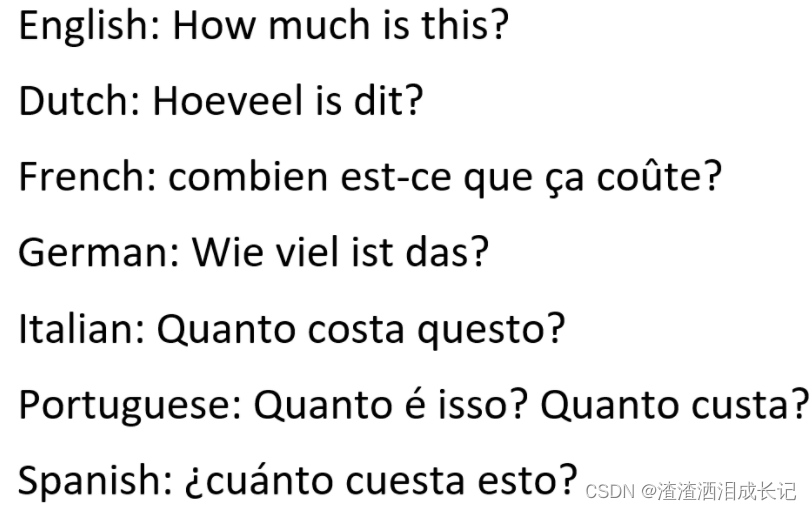
运行结果:都能轻松的识别出来
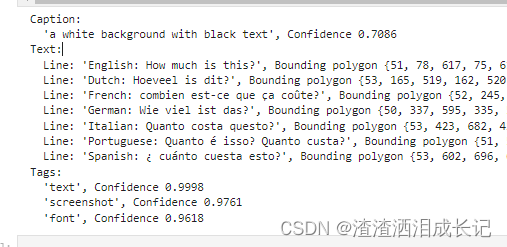
官网图片示例:多种图片https://github.com/Azure-Samples/cognitive-services-sample-data-files/tree/master/ComputerVision/Images
图像分析3.2版本git示例:https://github.com/Azure-Samples/cognitive-services-quickstart-code/blob/master/python/ComputerVision/ImageAnalysisQuickstart.py
3.图像OCR文本识别
3.1 url图像地址识别
用这个图片来测试下
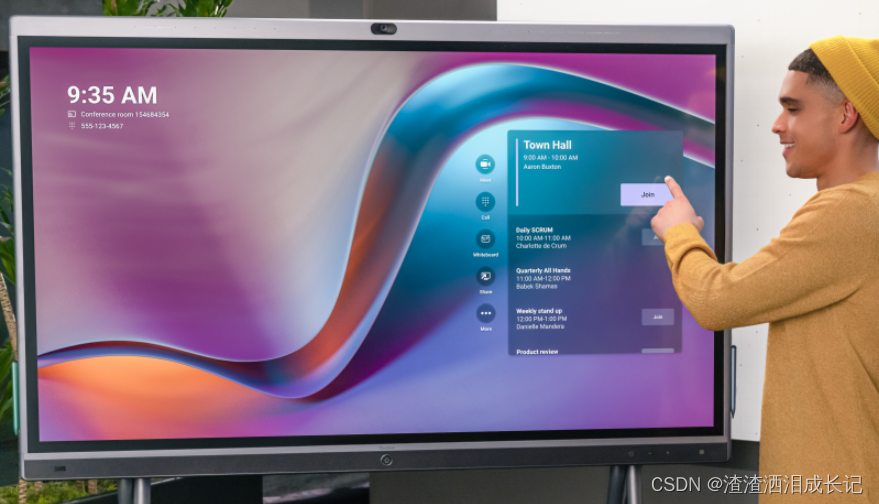
#OCR文本识别
from azure.cognitiveservices.vision.computervision import ComputerVisionClient
from azure.cognitiveservices.vision.computervision.models import OperationStatusCodes
from azure.cognitiveservices.vision.computervision.models import VisualFeatureTypes
from msrest.authentication import CognitiveServicesCredentials
import time
computervision_client = ComputerVisionClient(You endpoint,
CognitiveServicesCredentials(Your key))
read_image_url = "https://learn.microsoft.com/azure/ai-services/computer-vision/media/quickstarts/presentation.png"
read_response = computervision_client.read(read_image_url, raw=True)
read_operation_location = read_response.headers["Operation-Location"]
operation_id = read_operation_location.split("/")[-1]
while True:
read_result = computervision_client.get_read_result(operation_id)
if read_result.status not in ['notStarted', 'running']:
break
time.sleep(1)
if read_result.status == OperationStatusCodes.succeeded:
for text_result in read_result.analyze_result.read_results:
for line in text_result.lines:
print(line.text)
print(line.bounding_box)
print() 运行结果:可以看到识别到的文本
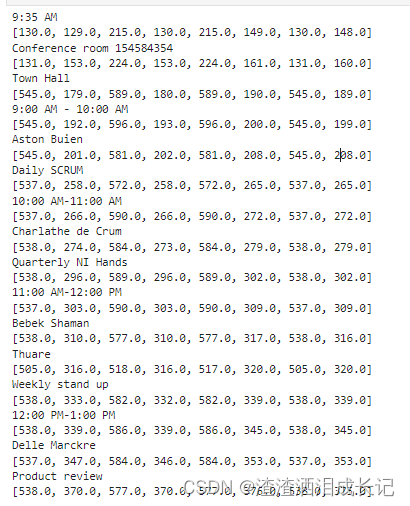
3.2 本地图像识别
用我自己手写的文字来试下,有标点符号,甚至还特别写了一个看不清的哎呀,让它识别一下
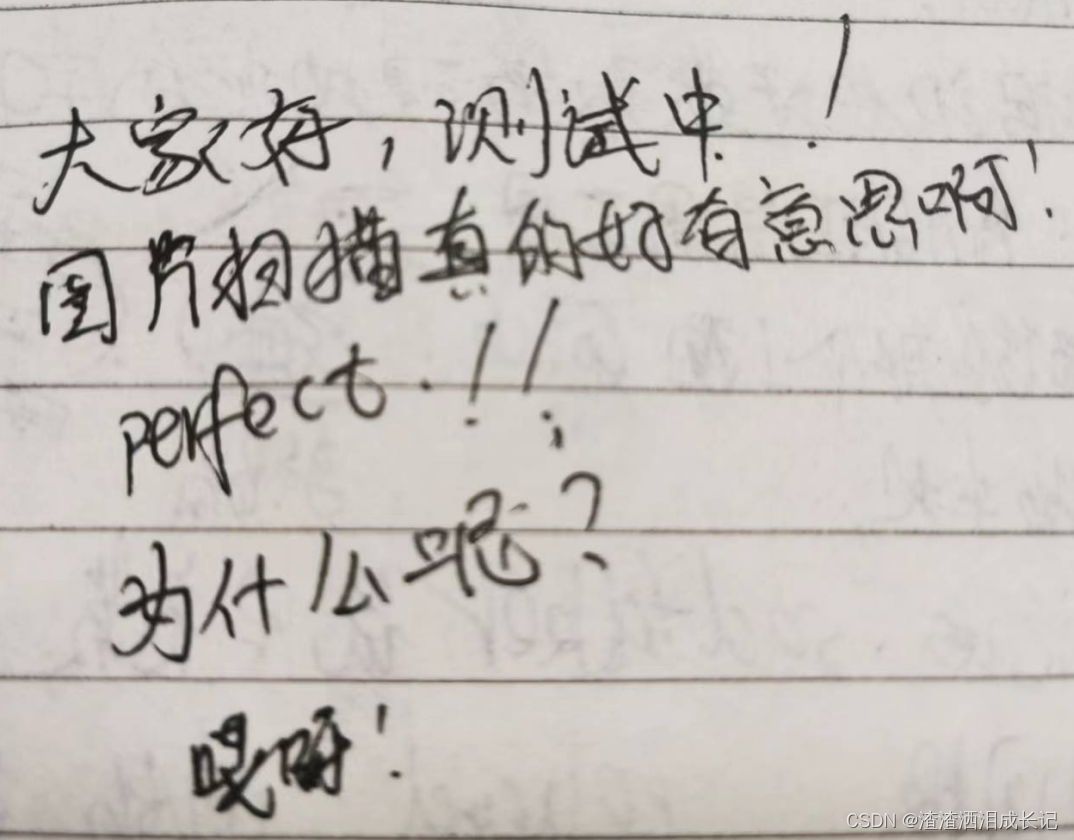
#OCR文本识别-本地
from azure.cognitiveservices.vision.computervision import ComputerVisionClient
from azure.cognitiveservices.vision.computervision.models import OperationStatusCodes
from azure.cognitiveservices.vision.computervision.models import VisualFeatureTypes
from msrest.authentication import CognitiveServicesCredentials
import time
import os
computervision_client = ComputerVisionClient(You endpoint,
CognitiveServicesCredentials( Your key))
local_image_path = os.path.join("C:\\Users\\Uniigym3\\AppData\\Roaming\\Python\\Python38\\Scripts\\images", "ocrTest2.jpg")
local_image = open(local_image_path, "rb")
read_response = computervision_client.read_in_stream(local_image, raw=True)
read_operation_location = read_response.headers["Operation-Location"]
operation_id = read_operation_location.split("/")[-1]
while True:
read_result = computervision_client.get_read_result(operation_id)
if read_result.status.lower () not in ['notstarted', 'running']:
break
print ('Waiting for result...')
print(read_result)
if read_result.status == OperationStatusCodes.succeeded:
for text_result in read_result.analyze_result.read_results:
for line in text_result.lines:
print(line.text)
print(line.bounding_box)
print() 运行结果:太感动了哈,它竟然识别出来了,甚至perfect的.都识别出来了 ,很有意思

我尝试把照片倒过来,然后就识别不到那个不清楚的字了。
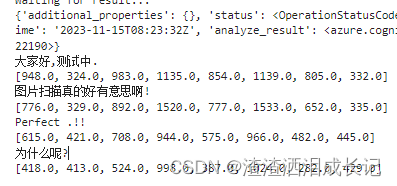

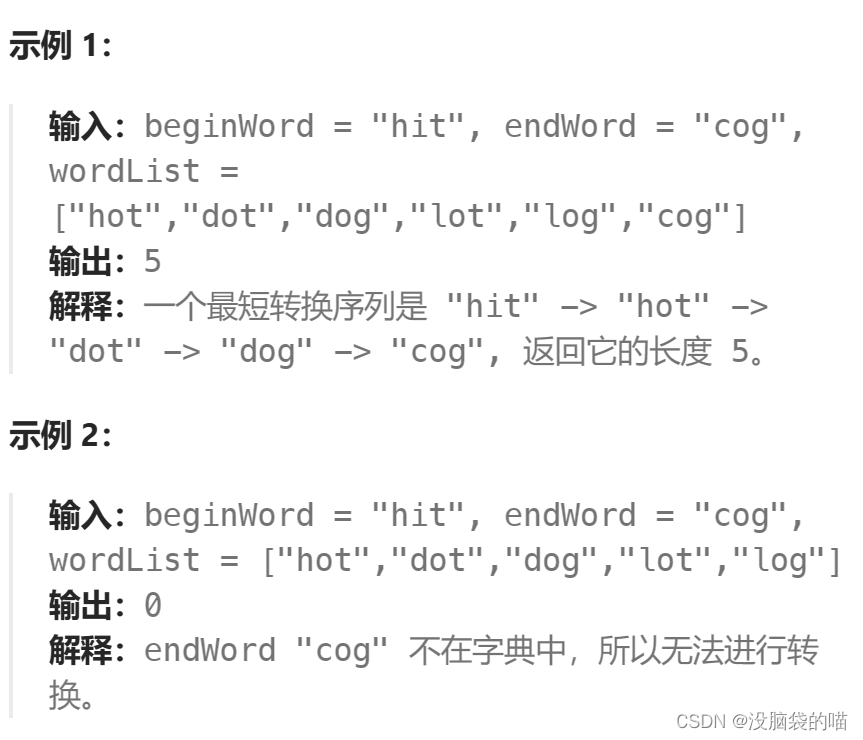

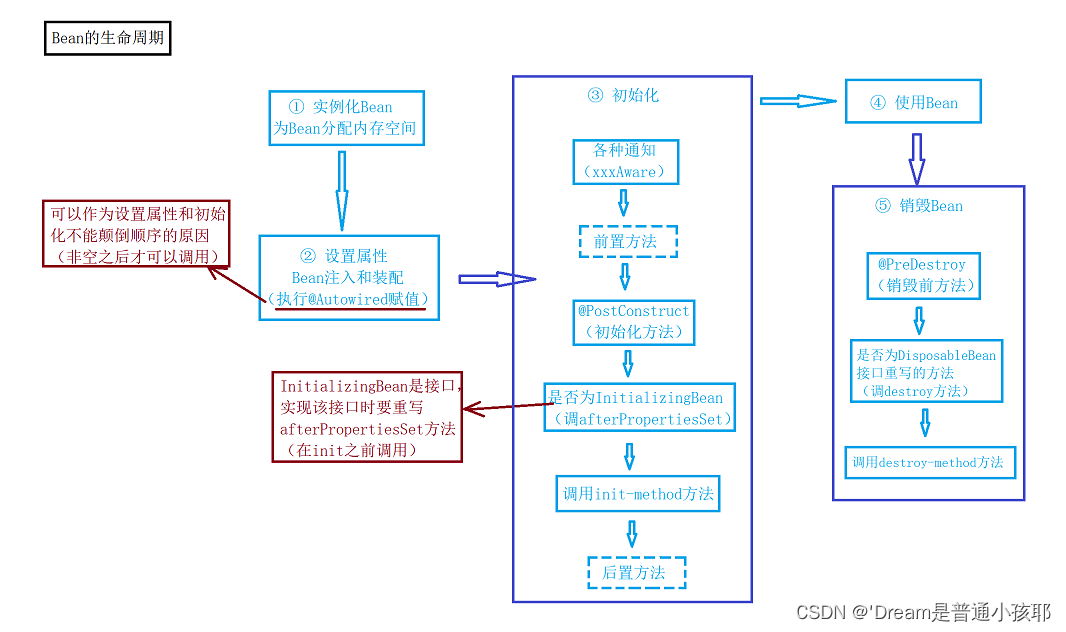
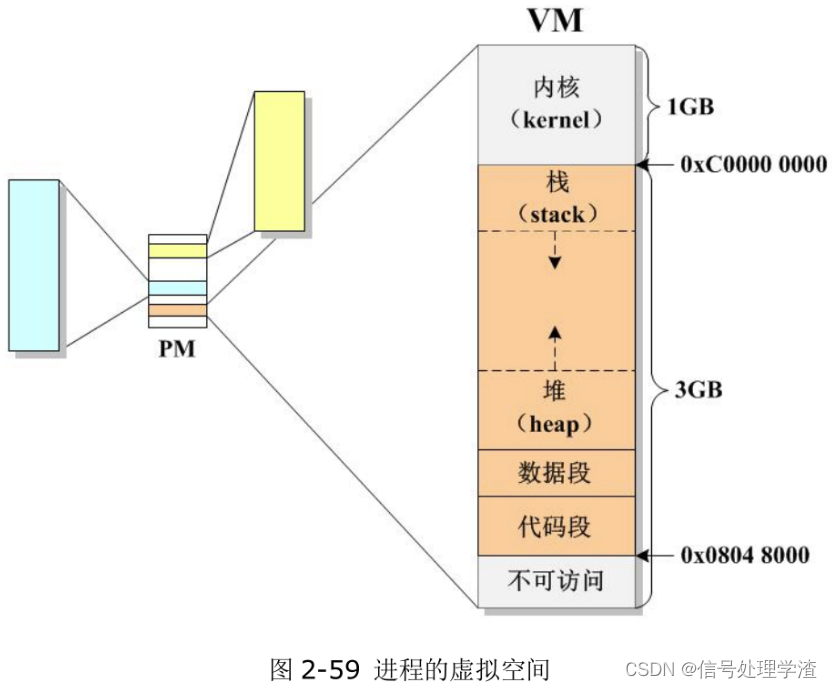
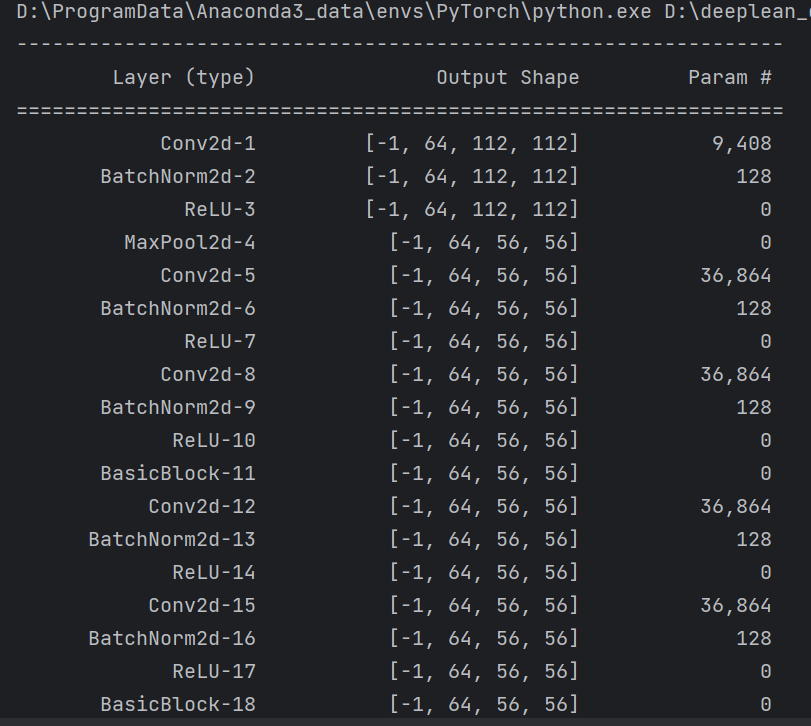
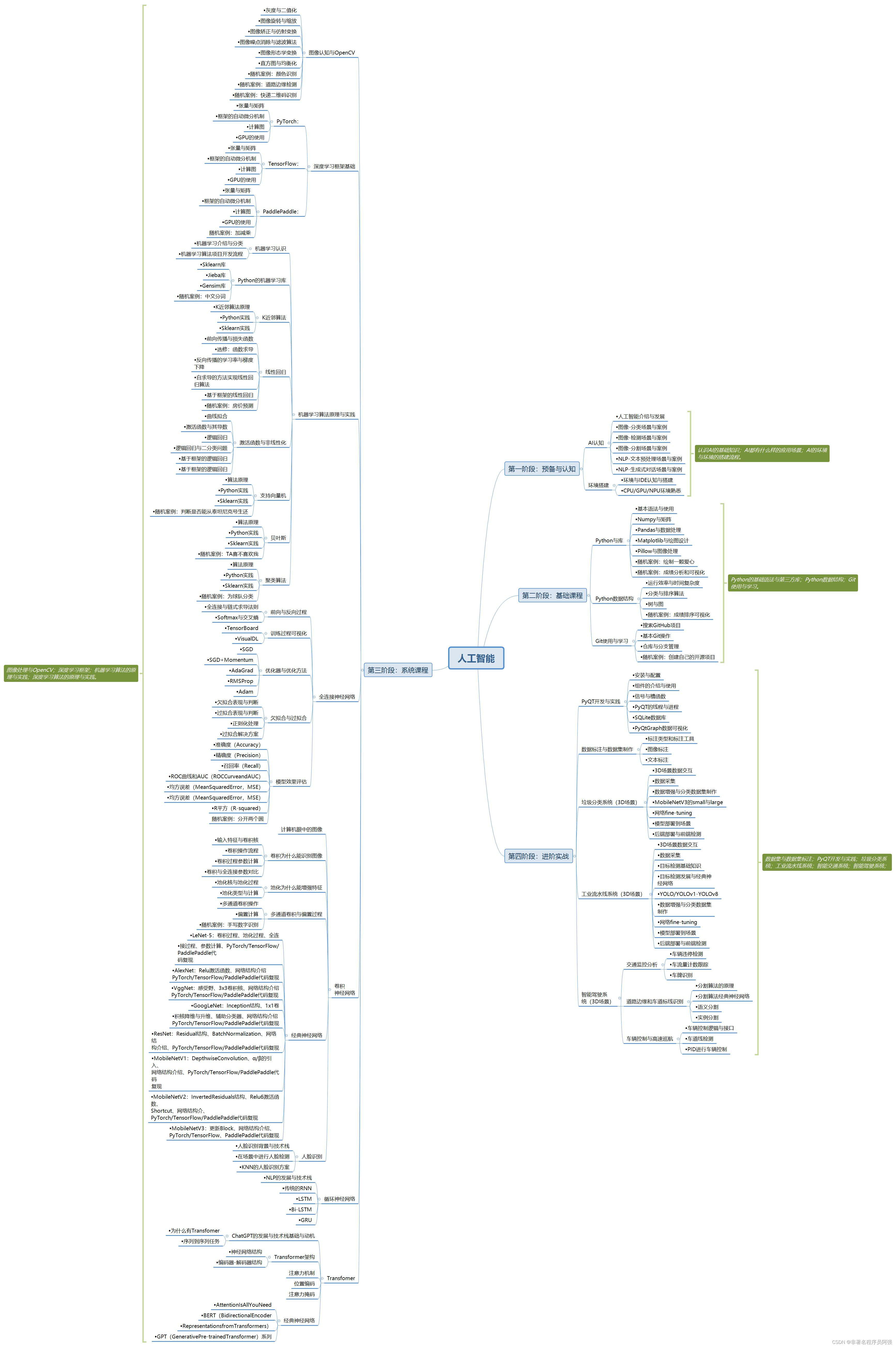


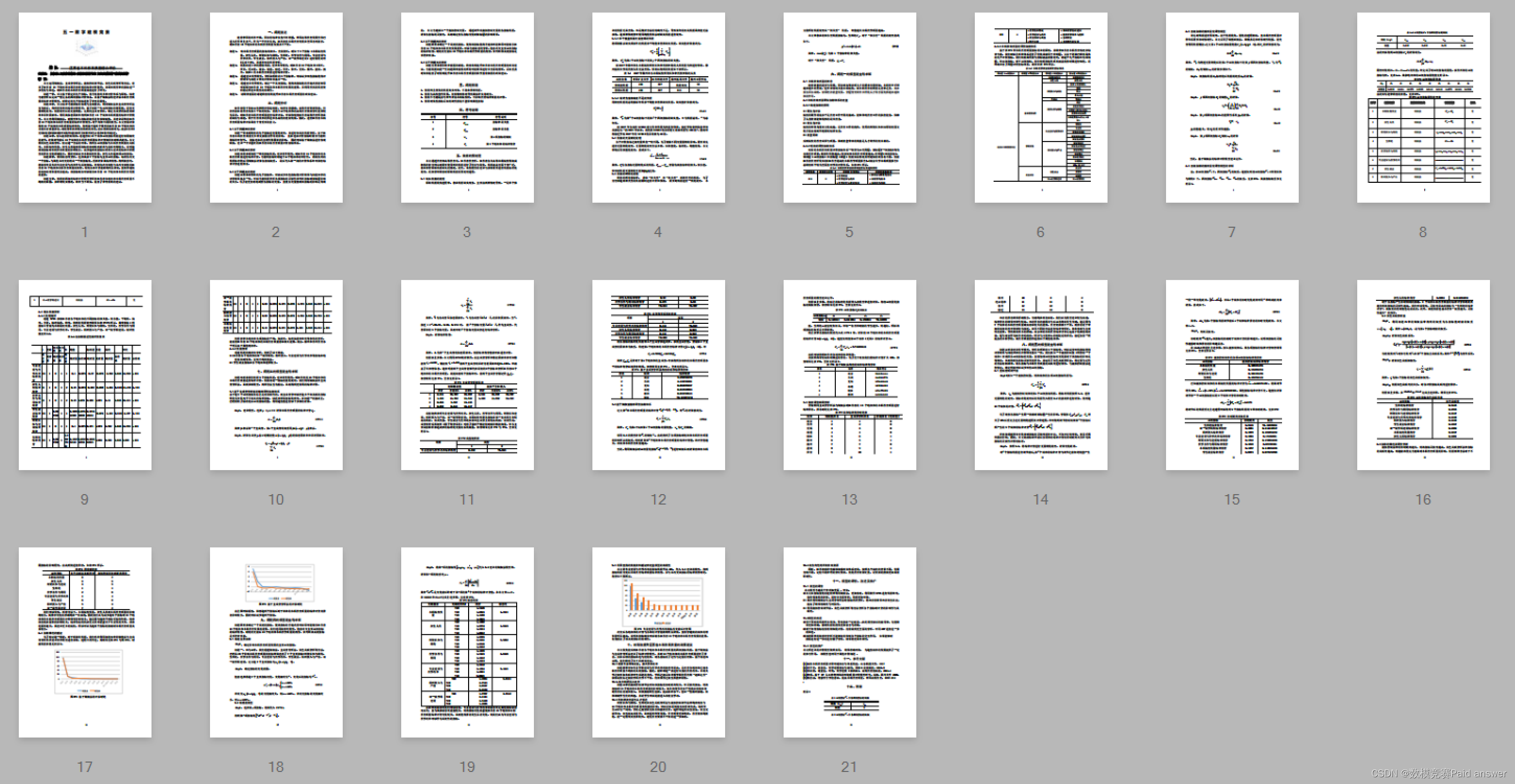
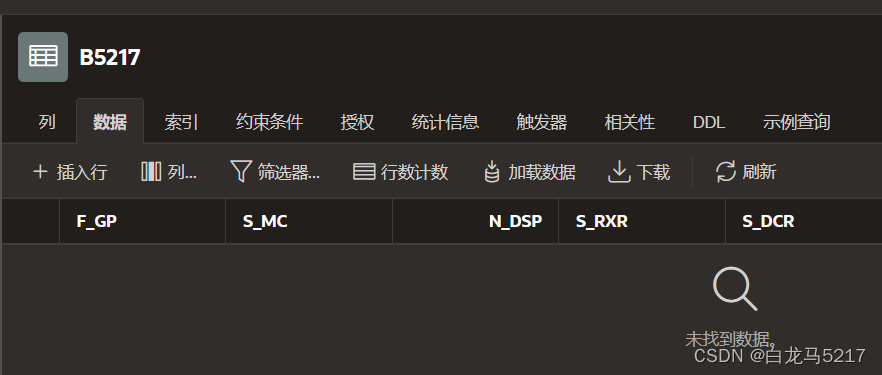

![2023年中国骨质疏松治疗仪发展趋势分析:小型且智能将成为产品优化方向[图]](https://img-blog.csdnimg.cn/img_convert/7f219a06f57b91242369de2e5641b5a4.png)

